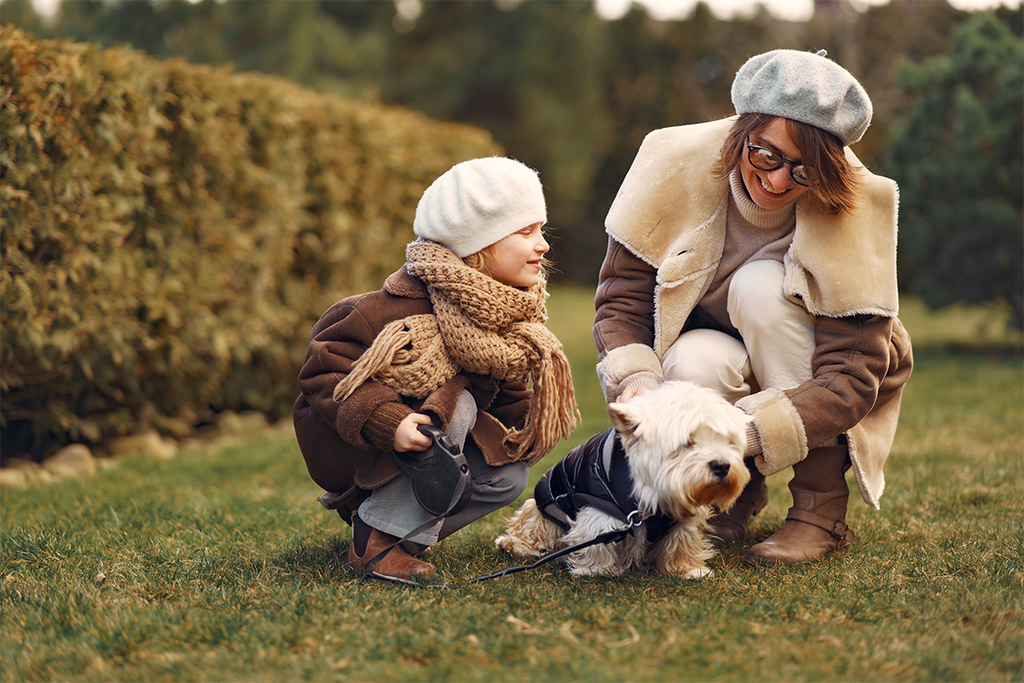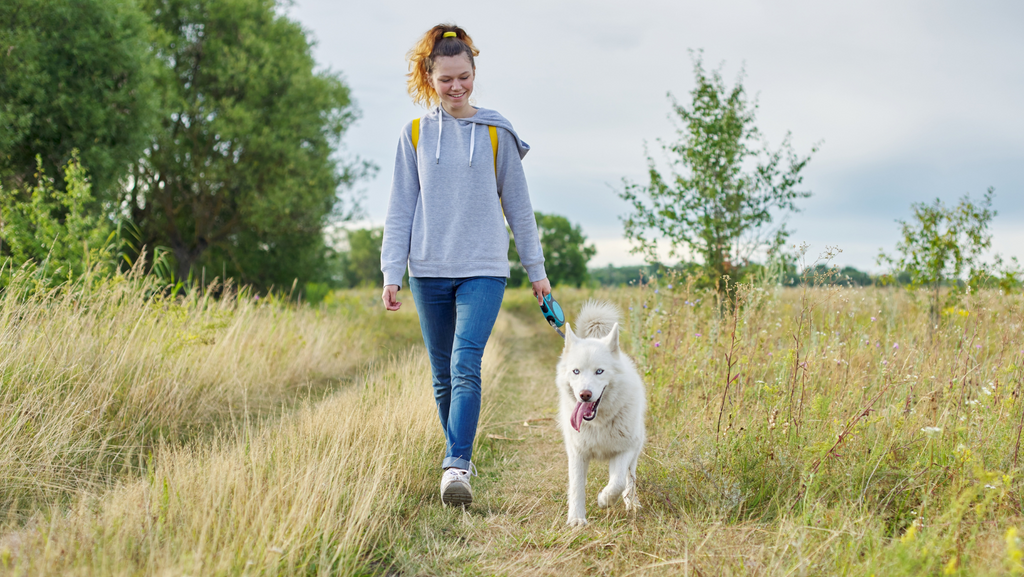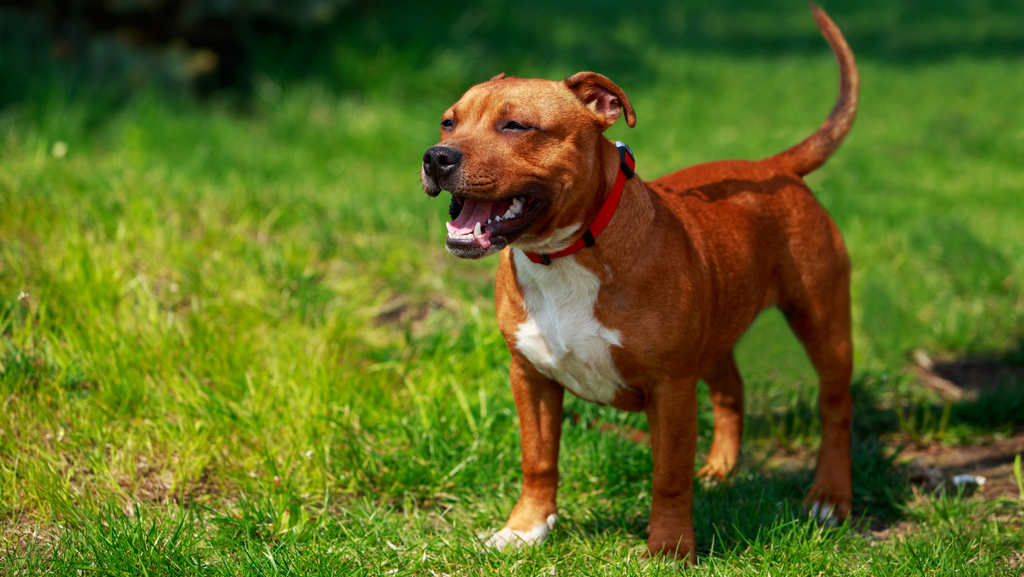Rescue Adoption Guide: Bringing Home a Rescue Dog
Preface: A Note About Adopting During the COVID-19 Pandemic

As the COVID-19 pandemic swept across our country and the globe, many people took advantage of their time at home to adopt a rescue dog. It fills our hearts with joy to know so many Australians stepped up to empty our shelters. An adopted four-legged family member really raised spirits for those in quarantine and those that became ill.
Unfortunately, as Australians return to work, we’re seeing a tragic rise in rescue dogs being returned to shelters. Why are so many pup parents parting ways with their newly adopted dogs? Behavioral issues is the number-one reason people return dogs to the shelter. The most common behavioral issue for dogs post-COVID seems to be separation anxiety, and it’s easy to understand why. Dogs go from spending 24/7 with their owners to being left home alone for 8+ hours at a time. Another reason Aussies are surrendering their recently rescued dogs is due to economic uncertainty and unemployment.
As you dive into this adoption guide, we hope that you’ll come to better understand that adoption is furever, and there are solutions to these issues and more. But here are some quick answers to provide you with advice regarding COVID-19 issues:
Dealing with Doggie Separation Anxiety In-Light of COVID-19
Desensitization Before Returning to Work
As you plan to return to work, prepare your pupper for his or her time alone. Ramp up to spending more time away from the house. Begin with just 30 minutes and progress to several hours of alone time for your dog. Try to give yourself a week or more of practice before you return to work. Do not make a big deal about leaving or arriving home. This lets your dog know this is just a normal thing--nothing to worry about.
Crate Training
Do you know why so many shelters recommend crate training? Crate training prevents destructive behaviors and, when used correctly, can help your dog feel more secure. It also reduces the number of potty accidents your pup has in the house.
To crate train your rescue dog:
- Purchase a crate that is tall enough for your dog to stand in and provides enough room for them to turn around.
- Place the crate somewhere in the house where you spend time. Dogs are social animals and don’t want to feel isolated.
- Set up the crate but give your dog a little time to get used to its presence. Place a comfy crate bed and some comfort items in your dog’s crate. Allow your dog to naturally approach, sniff, and explore the crate.
- Get your dog’s attention and place a few high-value pooch treats at the back of the crate. Allow your dog to enter, gobble up the treats, and exit at will. Repeat this several times over the course of the day and begin to pair a verbal command to your dog entering the crate. “Crate time” is a good go-to command.
- After your dog willing goes into his crate, it’s time to close the door. Place a new chew toy or treat at the back of the crate and latch the door.
- Sit nearby the crate and chat with your dog. Even if your dog whines a little, he’s ok. He’s not in pain, he’s likely just confused and doesn’t understand why he’s separated from you. Just be sure you provide a lot of positive reinforcement. You can even drop a few more treats in to improve his mood and redirect his attention.
-
Gradually increase the amount of time your dog is in his crate. Eventually, you can leave the room and the house. Dogs wind up enjoying their crates. And you will enjoy the peace of mind that your dog is safe, secure, and happy while you’re away at work.
Already Back at Work? Help Your Rescue Dog Overcome Separation Anxiety with Desensitization & A Dog Walker
A busy dog is a good dog. Hiring a dog walker to come over once or twice a day while you’re working can give your dog an opportunity for companionship and to release some of his nervous energy.
If you’re back at work and your dog is exhibiting signs of separation anxiety, work towards desensitizing him during your off-hours. We suggest desensitization before jumping into crate training as a natural progression.
Begin desensitizing your dog by starting your leaving routine. Once your dog shows signs of distress (whining, whimpering, darting toward the door), return to the sofa or elsewhere in the house. After practicing this a few times, your dog’s symptoms will begin to diminish.
Then, move onto exiting the house, but only for a few minutes. Your dog will likely be standing behind the door when you open it, again. Walk in and do not make a big deal about your return. Gradually, increase the time you’re outside, and your dog will slowly adjust to being alone. After a few weeks of good behavior, you can begin crate training your dog for a little added peace of mind for you and your dog.
Economic Worries and Keeping Your Rescue Dog Furever
There are ways you can reduce the cost of owning your dog to keep your beloved canine home. Most shelters will go above and beyond to help you keep your dog happy, healthy, and in a loving home. If you’re worried about affording dog food, switch to a better quality and more competitively priced doggie diet, or contact your shelter or vet to learn about local resources for pet food and vet services.
There are services out there like Pets of the Homeless, that are committed to helping keep dogs in their furever homes.
Don’t Let the COVID-19 Pandemic Turn into a Pandemic of Over-Filled Dog Rescues
The first step you should always take when adopting a rescue dog is to fully understand the commitment and cost of a dog. Fur real! Dogs are amazing, but they are a major responsibility. We hope that this preface and our adoption guide will help provide you with guidance in the adoption process.
PART 1- Petzyo’s Guide to Adopting a Rescue Dog

There’s no doubt that adopting a rescue dog is great to do. When you choose to adopt instead of shop, you’re giving a dog a second leash on life.
While adopting a new best friend may seem straightforward, it can be more complicated than many people realise. Don’t stress--if you’re considering adopting a doggo, we have you covered. This guide will walk you through impawtant details like: how to decide if you’re ready to bring home a bundle of fur and fun; how to choose the right dog for you; how to prepare your home, schedule, and life for your new dog buddy; how to handle the first days, weeks, and months with your new best friend.
What You Should Know Before Beginning the Adoption Process
Adopting a Rescue Dog is a Major Commitment
Bringing a new dog into your life and home is a huge responsibility and commitment. Most dogs live on average 10 or more years. This means you will need to provide for a dog for that long or longer. Dogs also come with expenses, physical needs, and time requirements, which over the course of a decade is a lot of work. Considering the top reasons dogs are returned to shelters can help you decide if you are truly ready to adopt.
The Top Reasons Dogs Are Returned to a Shelter
Adoption is furever. That is why, you have to consider your choice carefully. Returning a dog to a rescue results in trauma, abandonment issues, and taking away an available spot for another adoptable dog. Don’t get caught in one of these or one of the more common reasons people return their rescue dogs to the shelter.
- The cost of care is too much
- Their human can no longer physically care for them
- Dogs can be destructive and difficult to train (check out chapter 5 for tips on separation anxiety!)
- Their landlord did not approve of them having a pet
- They are moving and their new lease doesn’t allow dogs
What to Consider Before Adopting a Rescue Dog
How Much Does a Dog Cost?
Can you really put a price tag on love? Yes and no when it comes to a dog. It’s at least very important to know what to expect as far as expenses are concerned. The average annual cost of owning and properly caring for a dog is about $1,500 per year or about $16,000 over your dog’s lifetime of ten years.
How Much Time Does a Dog Require?
Dogs require your companionship and exercise. Most dogs need between thirty minutes to two hours’ worth of exercise every day. They also benefit from spending time with their owners beyond just exercising. A dog’s emotional wellbeing depends on feeling secure and loved. This can be snuggling or just hanging out watching television. Training your dog is also another great way to help a dog build confidence and strengthen the dog-owner bond.
Be Sure You Won’t Have to Return Your Dog Due to Allergies
Before adopting a dog, you will also want to find out if you or anyone in your home has allergies to dogs. Choosing a dog that has a hypoallergenic coat can help.
What If You’re Unsure of Your Future Budget and Schedule?
If you do not have the ability to pay for the expenses related to a dog or you do not have the time to spend with a dog, you may want to reconsider adopting one right now. There will always be lovable dogs in need of good homes in the future.
If you’re set on bringing a rescue dog into your life, but you’re unsure if you have the long-term ability to pay for her needs, you may want to discuss your situation with the adoption coordinator at your local shelter. They can help you make an informed decision based on your situation.
There are ways to navigate dog ownership that can cost less and require less time, though. For example, you can bring your dog to doggie daycare or see a vet that works through a charity. Providing your dog with preventative veterinary care and a premium dog food diet can also reduce your long-term veterinary expenses.
Be Prepared for an Emotional Rollercoaster

The adoption process can be fraught with a mix of emotions and confusion. When you walk into a shelter, it’s nearly impossible to not fall for each pair of puppy dog eyes. It can also be heartbreaking to fall for a pup that just won’t work with your current lifestyle or pets. Of course, there is also the swirl of apprehension and fear of being unprepared or unready to care for a vulnerable and very dependent living creature.
These feelings are normal, but be prepared to deal with them. Before beginning the search for your new dog, find someone you can talk to if you’re feeling sad, overwhelmed, or confused during the process. Getting those feelings out in the open can unburden you.
Keep in mind that you will want to focus on the positive aspects of finding your perfect best friend. If a dog just isn’t the right fit, remind yourself that there is a family out there that could make that dog very happy. And don’t worry if you feel the dog-rescue-blues, your new best friend will help you and your family feel better!
Deciding if You Have the Personality to be a Dog Owner

Dogs are a lot of fun. They’re a lot of work as well. Fostering a dog or dog sitting can give you a taste of dog ownership without the commitment. Caring for a dog in the short-term can provide you with the peace of mind that you’re going to be a great dog parent.
Coming to Peace with Your Decision
If you decide now is not the right time to adopt, it can help to pinpoint why. Once you understand how you came to the decision you made, you can make the choice to work towards adopting in the future or making the difference for shelter dogs in a different way.
If you cannot adopt but want to help consider:
- Fostering dogs in need
- Volunteering at a shelter
- Fundraising for a shelter
- Dog sitting or dog walking




